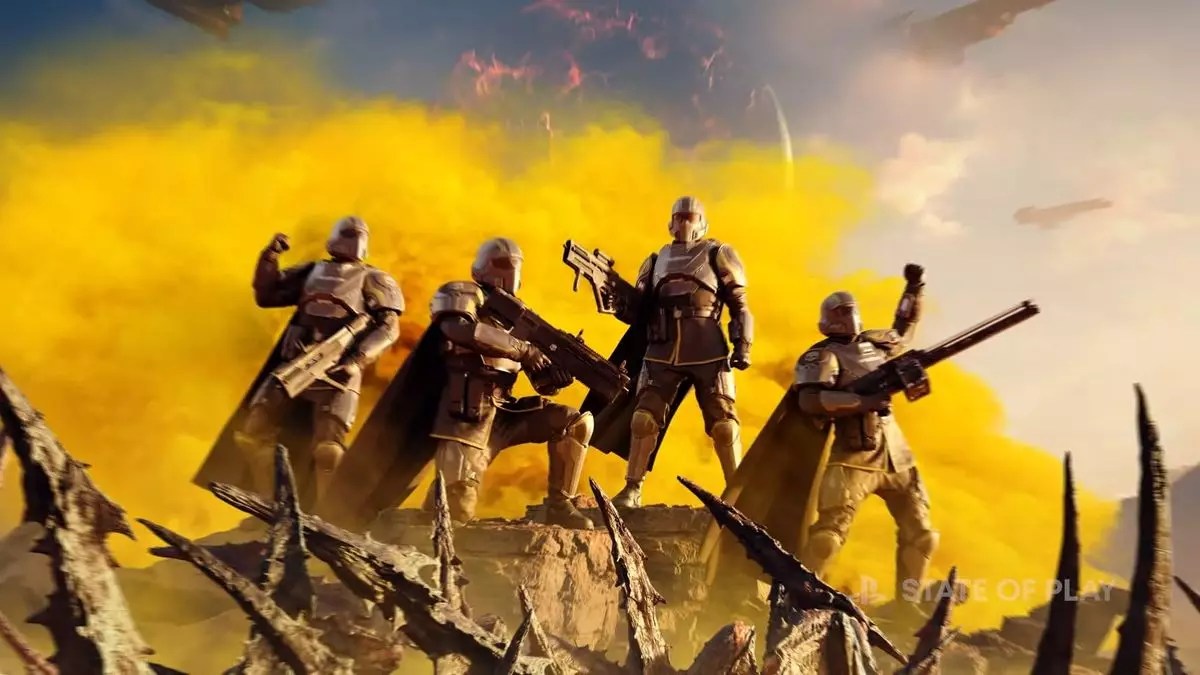After spending numerous hours playing Helldivers 2, I couldn’t help but notice the striking resemblance it bears to the Halo games of yesteryear. While the thematic and mechanical differences between the two are apparent, the essence of glorious multiplayer chaos is what ties them together. The thrill of accidentally fragging friends or causing mayhem in a cooperative setting is akin to the experiences I had while playing Bungie-era Halo games.
In Helldivers 2, the fragile heroes face a short life-expectancy due to the relentless enemy factions and, at times, their own teammates. The friendly-fire incidents, although at times frustrating, add to the overall enjoyment of the game. The diverse armory of weapons, ranging from assault rifles to orbital lasers, provides players with the freedom to unleash havoc in various ways. This shared sandbox of overpowered weaponry is reminiscent of the foundation of Halo, where players can experiment with different tools to wreak havoc or strategically assist their teammates.
What sets Helldivers 2 and Bungie-era Halo games apart from other shooters is their emphasis on teamwork and team-killing moments. Both games offer opportunities for players to work together to achieve common objectives, whether it’s operating vehicles in Halo or coordinating attacks in Helldivers 2. The cooperative play dynamics create a balance of camaraderie and chaos, where communication and careful weapon usage are vital for survival.
The shared experience of witnessing a friend get obliterated by a stray shot from an orbital barrage or coordinating a well-executed attack is what makes these games memorable. The laughter that ensues from these moments, even in the most intense missions, highlights the unique blend of fun and challenge that cooperative play offers.
While Bungie-era Halo games and Helldivers 2 excel at delivering engaging cooperative experiences, the same cannot be said for recent mainline Halo titles. The introduction of personal ordnance drops in Halo 4 and microtransaction systems in Halo 5: Guardians shifted the focus away from teamwork towards individual progression. These additions, although exciting, steered the franchise away from its roots of cooperative play.
The absence of core features like online campaign co-op and Forge in Halo Infinite’s launch was a significant disappointment for fans craving cooperative experiences. The disconnect between the industry trends and the essence of Halo’s cooperative gameplay was evident in the latest iterations of the series.
The Future of Cooperative Sci-Fi Shooters
As Halo Infinite wraps up its final season, it’s clear that 343 Industries needs to reevaluate its approach to cooperative play in the franchise. The emergence of games like Helldivers 2 highlights the demand for engaging, teamwork-oriented shooters with expansive weapon sandboxes. The potential for innovation in cooperative gameplay exists, but it requires a departure from the conventional norms set by industry-leading titles.
Moving forward, it’s essential for developers to prioritize cooperative experiences and foster a sense of camaraderie and chaos in their games. By learning from the successes of classics like Bungie-era Halo games and modern gems like Helldivers 2, developers can create immersive and unforgettable cooperative sci-fi shooters that resonate with players.


Leave a Reply